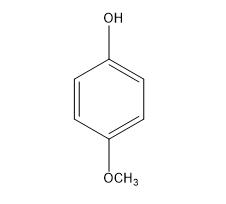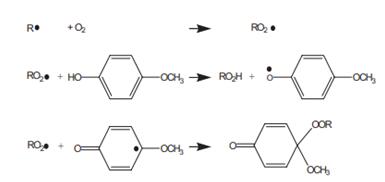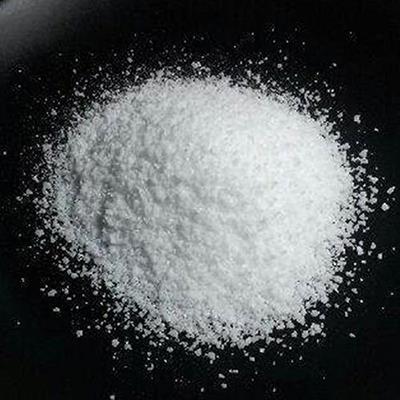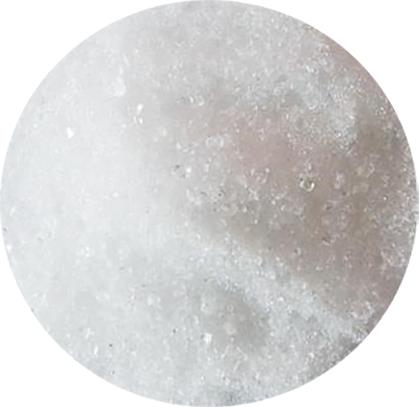4-Methoxyphenol: Pharmacodynamics, Toxicity, Applications, Preparation
Introduction
4-Methoxyphenol, also known as p-cresol, is an organic compound that is used primarily as a chemical intermediate in the preparation of other chemicals, such as pharmaceuticals, fragrances, and dyes. It is also used as a disinfectant, as well as a flavor and fragrance ingredient in some food products. In high concentrations, it can be toxic and irritating to the skin and eyes[1].

Figure 1 Chemical formula of 4-Methoxyphenol
Pharmacodynamics
4-methoxyphenol has antioxidant and anti-inflammatory properties that may be beneficial for treating certain conditions. 4-methoxyphenol has been shown to scavenge free radicals and inhibit the activity of certain enzymes that are involved in inflammation, such as cyclooxygenase-2 (COX-2) and 5-lipoxygenase (5-LOX). In addition, animal studies have suggested that 4-methoxyphenol may have neuroprotective properties and could potentially be used to prevent or treat neurodegenerative diseases such as Parkinson's disease. Interestingly, it has also been suggested that 4-methoxyphenol could be used as a potential treatment for obesity, as it has been shown to decrease the activity of genes that are involved in lipid metabolism and increase energy expenditure in animals[2].
Toxicity
4-Methoxyphenol can be toxic if ingested or exposed to the skin or eyes in high concentrations. The primary routes of exposure to this compound are through inhalation, ingestion or dermal contact. At high concentrations, 4-Methoxyphenol has been shown to cause skin and eye irritation, as well as respiratory irritation and damage to the lungs. It can also cause nausea, vomiting, diarrhea, abdominal pain, and neurological symptoms such as headache, dizziness, and confusion. Chronic exposure to 4-methoxyphenol may result in liver and kidney damage. Animal studies have shown that exposure to high levels of 4-methoxyphenol can cause liver necrosis, kidney lesions, and testicular atrophy.
It is important to use appropriate safety measures when handling 4-methoxyphenol, such as wearing gloves, protective clothing, and a respirator to avoid inhalation of the compound. In case of exposure, immediate medical attention should be sought, and contaminated clothing or skin should be washed with soap and water[3].
Applications
4-Methoxyphenol, also known as p-cresol, is a chemical compound with various applications in industry and research. One of its main uses is as an intermediate in the production of antioxidants, such as butylated hydroxytoluene (BHT). These antioxidants are commonly used in food packaging, cosmetics, and personal care products to prevent spoilage and extend shelf life.
Another important application of 4-Methoxyphenol is in the manufacturing of pharmaceuticals and agrochemicals. It serves as a key building block for the synthesis of many drugs, including fluoroquinolone antibiotics and anticoagulants. In agriculture, 4-Methoxyphenol is used as a starting material for the production of herbicides and fungicides.
In addition to its industrial applications, 4-Methoxyphenol is also used in research as a model substrate for studying enzymatic activity and protein structure. It is a common reagent in biochemistry experiments to investigate the mechanisms of enzymes involved in metabolism, such as cytochrome P450.
Overall, 4-Methoxyphenol plays an important role in various fields, from industrial production to scientific research, due to its versatile properties and wide range of applications[4].
Preparation
One common method is the methylation of phenol using dimethyl sulfate or methyl chloride in the presence of a base such as sodium hydroxide or potassium hydroxide. This reaction results in the formation of 4-methylphenol, which can then be further methylated using dimethyl sulfate under alkaline conditions to produce 4-Methoxyphenol.
Another method for synthesizing 4-Methoxyphenol involves the methylation of guaiacol using formaldehyde and hydrogen chloride gas in the presence of a catalyst such as zinc chloride. The resulting intermediate is then reacted with a base such as sodium hydroxide to yield 4-Methoxyphenol.
A third method involves the oxidation of anisole using acidic potassium permanganate or copper sulfate. The reaction produces 4-Methoxybenzene-1,2-diol as an intermediate, which can be further oxidized using a mild oxidizing agent like iodine or ceric ammonium nitrate to yield 4-Methoxyphenol.
Overall, the synthesis of 4-Methoxyphenol is a versatile process that can be achieved through multiple pathways, depending on the starting materials and reaction conditions used[5].
References
[1] Aoki SY, Ito M, Kawakami S, Matsubara T, Saigusa D, Shimizu T, et al. Establishment of a fluorescent assay for 4-methoxyphenol 2-monooxygenase activity and the identification of the genes responsible for the enzymatic activity in Gordonia rubripertincta CWB2. [J]. Biosci Biotechnol Biochem. 2015;79(7):1176–83.
[2] D’hooge D, Raes K, Verhelst R, Schelstraete W, Debaere S, Van der Meeren P, et al. Effect of different methods of integrating 4-methoxyphenol in the resin on the cytocompatibility of dental composites. [J]. Dent Mater. 2020;36(5):714–21.
[3] Kim M-J, Shin G-I, Roh H-S, Kim Y-H, Oh H-B. Inhibitory Effects of 4-Methoxyphenol on Lipopolysaccharide-Induced Neuroinflammation in BV2 Microglial Cells. [J]. Biomolecules. 2020;10(1):63.
[4] Zhang Y, Wang H, Li J, Cao Y, Feng X, Liu X. Mechanism research on the oxidation of 4-methoxyphenol catalyzed by Co3O4 spinel-like nanocatalysts.[J]. Inorg Chem Front. 2020;7(21):3804–11.
[5] Zheng Y, Zhang Z, Liu H, Wang J, Huang Y. Synthesis and fluorescence properties of two novel fluoride selective 4-methoxyphenol based fluorescent probes. [J]. Spectrochim Acta A Mol Biomol Spectrosc. 2019;214:71–7.
);You may like
Related articles And Qustion
Lastest Price from 4-Methoxyphenol manufacturers

US $0.00/kg2024-04-30
- CAS:
- 150-76-5
- Min. Order:
- 1kg
- Purity:
- 99%
- Supply Ability:
- 500mt

US $50.00/kg2024-04-28
- CAS:
- 150-76-5
- Min. Order:
- 1kg
- Purity:
- 99%
- Supply Ability:
- 5000kg/Month



